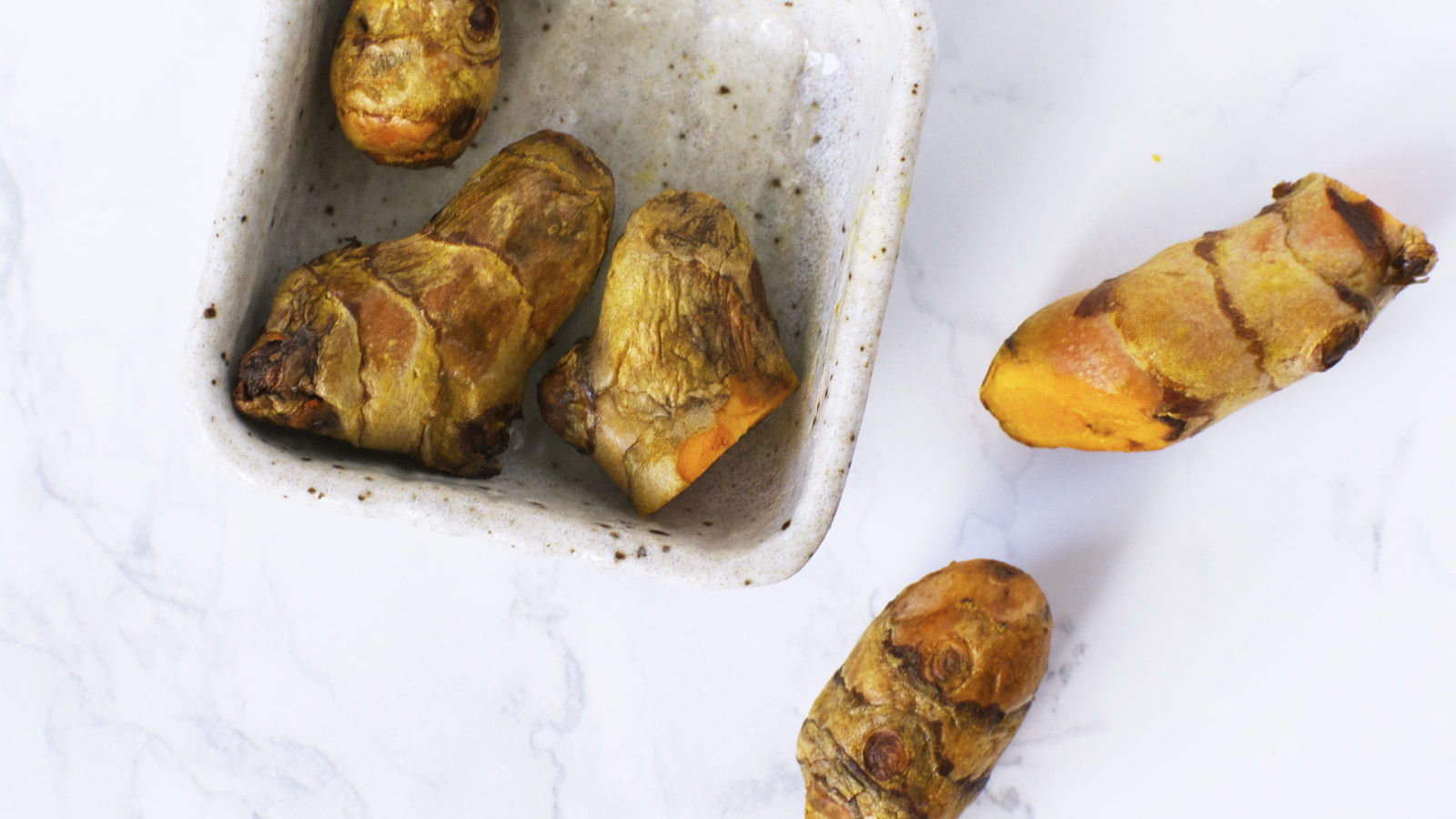Turmeric is a root vegetable from the Indian subcontinent and Southeast Asia. Both fresh turmeric root and turmeric powder are used for culinary purposes. It is added to dishes for its flavour and colour. It is also used as a supplement due to its health benefits.
Turmeric, a rhizome plant belongs to the same plant family as ginger. Just as its cousin plant, turmeric tastes a little spicy, earthy and even carries a mild bitter taste when too much of it is added to the dish. The cultivation of turmeric requires warm temperature, humid weather and well drained soil for it to thrive.
With a history of over 5,000 years, turmeric has been consumed for its health benefits. Besides being used for culinary purposes, turmeric is also used as a natural dye for its deep shade of yellow-orange colour. Therefore, it is advisable to wear gloves when handling turmeric to prevent it from staining the fingers. This might be one of the reasons why turmeric is known as "Indian saffron". Compared to saffron which is expensive, turmeric is a great substitute as a natural food colour or for dyeing cloth.
The health benefits and medicinal values of turmeric are well known in both the Asian and Western countries. Used in the practice of traditional Indian medicine, turmeric is said to help with stomach and liver problems. It is anti-inflammatory, high in anti-oxidants and anti-bacterial, thus is often used to heal wounds and rashes. There are also practices in rural India where the fumes of burned turmeric are inhaled to cure sinusitis, cough and cold.
In recent years, there were also many studies which proved that curcumin, a substance in turmeric has anti-cancer effects. As stated in a clinical report which was published in 2017, curcumin acts as an adjuvant with chemotherapy. As chemotherapy kills the cancer cells, it also attacks the good cells. Curcumin is believed to prevent the relapse of cancer. The study also shows how curcumin is effective in decreasing the progression of cancer.
Beauty junkies who love natural healing would have heard of turmeric masks which is extremely effective for acne-prone skin. Consuming turmeric is also believed to aid in weight loss.
Fresh turmeric has a thin light brown skin. Buy turmeric which is firm and not wrinkly. There should not be any moldy spots.
Wrap fresh turmeric in paper towel and store in an airtight container or ziplock bag before refrigerating. Freeze fresh turmeric for it to last longer. Consume within 6 months.
